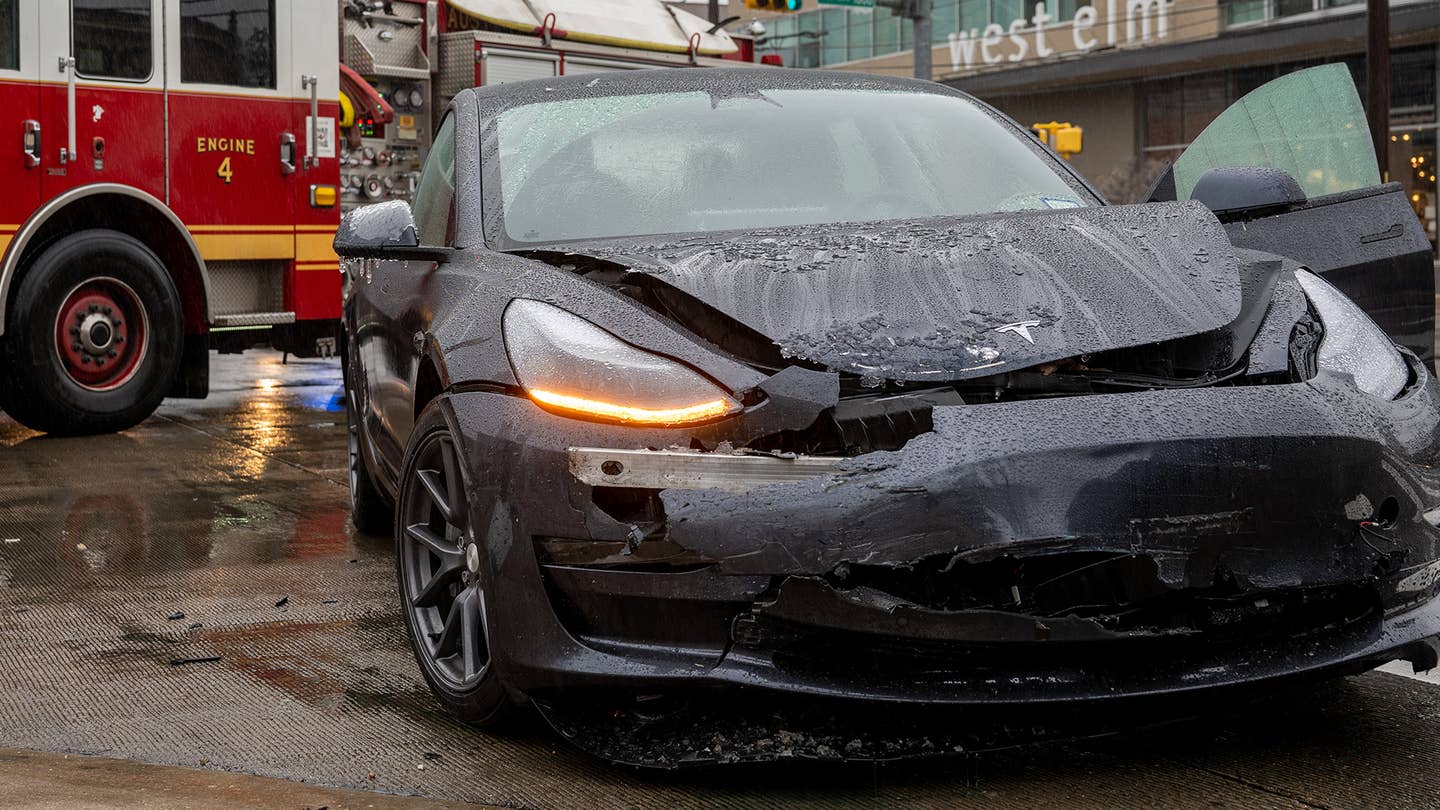One reverse engineering firm says the Tesla Model Y’s structural battery pack has “zero repairability.”

Often, these packs aren't serviced at a typical dealership or body shop. This means that if the packs are damaged as part of an accident, an insurance company will often write off the entire cost of car rather than the repair of a single internal component. According to Reuters, this has led to a number of low-mileage EVs quickly making their way to salvage yards and auctions with even the slightest battery-related damage.
While Reuter's report addresses multiple manufacturers, one in particular that is quite prevalent is Tesla. We've reported on Tesla's hefty battery replacement costs previously, with the Model 3 costing around $16,000 or more to replace the battery pack, however, the cost to replace the pack is only part of the equation—the other is lack of serviceability.
Likely, the inability to service Tesla's batteries has become more frequently noticed due to some manufacturing changes related to the automaker's new "structural" battery pack found in the made-in-Texas Model Y which is made from Tesla's new 4680 cells. As the name implies, the structural designation means that the battery is an integral part of the vehicle's construction. It increases the vehicle's overall rigidity while also creating anchor points for other components necessary for vehicle assembly.
Tesla achieves this rigidity through a method commonly used in electronics assembly called "potting." In most electronics, potting is meant to protect components from shock, vibration, and other types of damage. In Tesla's battery, these advantages are compounded by allowing the battery pack to become stiffer as well.
The problem is that this manufacturing method also makes servicing the battery next to impossible. Automotive engineer Sandy Munro explains in a battery teardown that the 4680 pack in a new Texas-built Tesla Model Y has virtually "zero repairability" due to the potting foam, meaning that a pack with external damage can't simply have the shell of the pack replaced, nor cal an internal cell easily be swapped out.
Now, potting isn't exactly a new idea for Tesla's battery packs. Gruber Motor Company explains that Tesla used a similar method with early Roadster batteries, although those battery packs do not appear to be as heavily encased in potting material as the new structural packs. However, Model S, X, 3, and Y packs made from 18650 and 2170 cells have more serviceable modules.
Actually servicing a battery once deployed in the field is dependent on the automaker. GM and Ford have worked to make their packs modular, making it easier to swap a pack module out for a new one in the event of a failure. Some automakers—Tesla included—will opt to replace an entire pack and then focus on using the components for remanufacturing other packs, or recycling the valuable minerals that make up the cells.
This also includes the 4680 cells that are potted inside the structural pack. CEO Elon Musk confirmed last summer that the 4680 pack can be recycled in its entirety. While Musk doesn't elaborate on this, it's worth reading our feature on battery recycling to understand the various ways that a used battery can find new life after its use on the road has ended.
Even though these batteries are recyclable by automakers, insurers are much more conservative about any risk-based activity. For example, reusing a potentially compromised battery is risky when it can't assess just how damaged it might be. As such, they are quick to write a vehicle off for even the slightest possibility of battery damage, meaning potentially higher premiums for EV adopters.
The increased cost and easy write-off might not happen forever, though. Tony Cotto, the director of underwriting policy at the National Association of Mutual Insurance Companies, told Reuters says that one way to solve this problem is to provide consumer-facing and third-party access to data that can assess battery health. This data, which borders the information asked by many right-to-repair advocates, could help provide valuable information to insurers and consumers alike, perhaps even reducing the likelihood that their wrecked vehicle could be scrapped. Until that happens, however, wrecked EVs will likely continue to pepper scrap yards and salvage auction houses across the nation.
Got a tip or question for the author? Contact them directly: rob@thedrive.com
Bagikan Berita Ini














0 Response to "Lots of Crashed EVs With Minor Battery Damage Are Being Totaled - The Drive"
Post a Comment